Top 10 Sooners: Tight End
Every Thursday this summer, SI Sooners ranks the top 10 Oklahoma Sooners at their respective positions. Today: tight end.
- - - - -
10. Joe Jon Finley (2004-07)
A high school quarterback and the son of a coach from Arlington, TX, Joe Jon Finley arrived at Oklahoma with a high football IQ, and plied that into a successful career.
Finley caught 62 passes for 775 yards and scored 10 touchdowns in his OU career and improved every year — especially at blocking. As Finley got stronger and more physical in Bob Stoops’ run game, he also became more productive in the pass game, improving his catches, yards and TDs every season. He was named honorable mention All-Big 12 in 2006 and 2007.
Finley wasn’t drafted but had a brief NFL career, playing parts of three seasons with San Francisco, two seasons with Detroit and one season with Carolina, although he never caught a pass in a regular-season game.
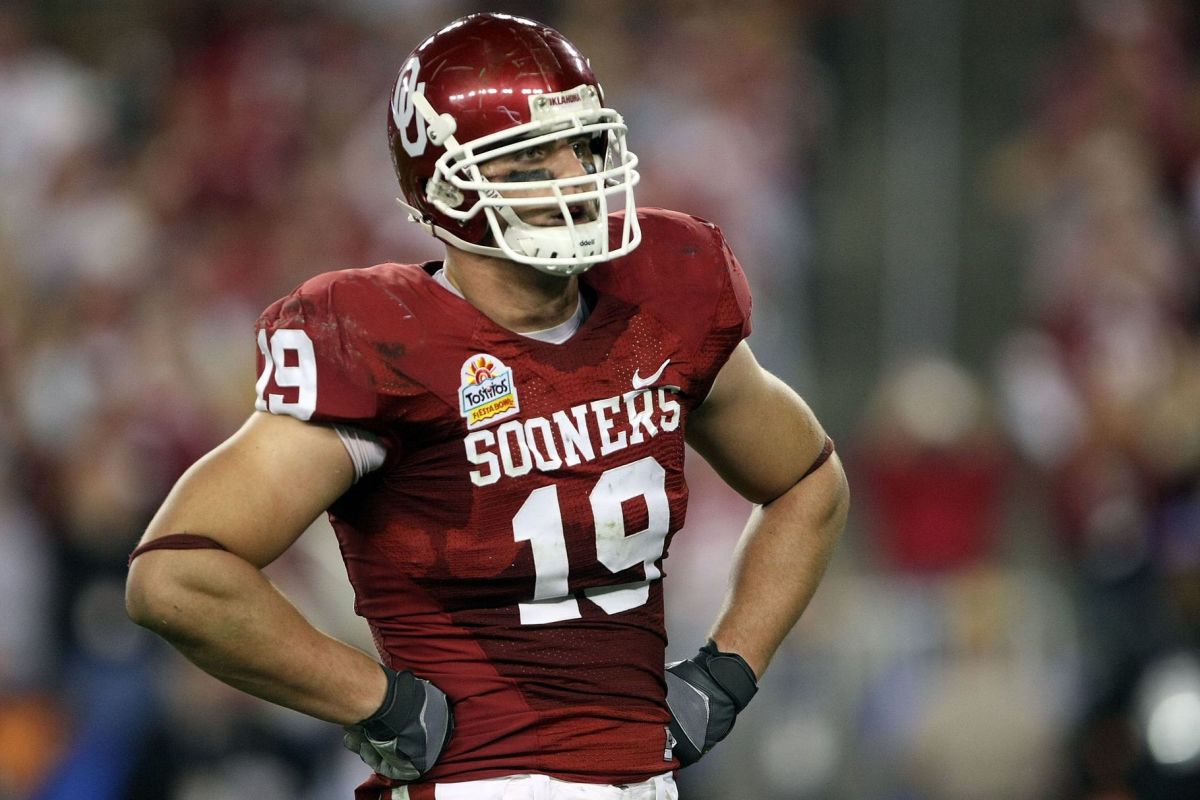
9. Al Chandler (1970-72)
Al Chandler played three years for Chuck Fairbanks at a time when tight ends were extra tackles who happened to be eligible for a pass. But Chandler made the most of his few opportunities.
Chandler’s career spanned from pre-wishbone to post, but even today, Chandler ranks 10th in school history for receiving yards by a tight end with 707. He caught just 32 passes in his three seasons, but averaged 22.1 yards per catch and scored eight touchdowns. Chandler was named first-team All-Big Eight in 1971,
Chandler, from Oklahoma City, was a second-round pick of the Cincinnati Bengals in the 1973 NFL Draft (43rd overall). In six NFL seasons, he played in 85 games and made 16 starts for Cincinnati, New England and the St. Louis Cardinals. Chandler finished his NFL career with 35 receptions for 367 yards and nine TDs.
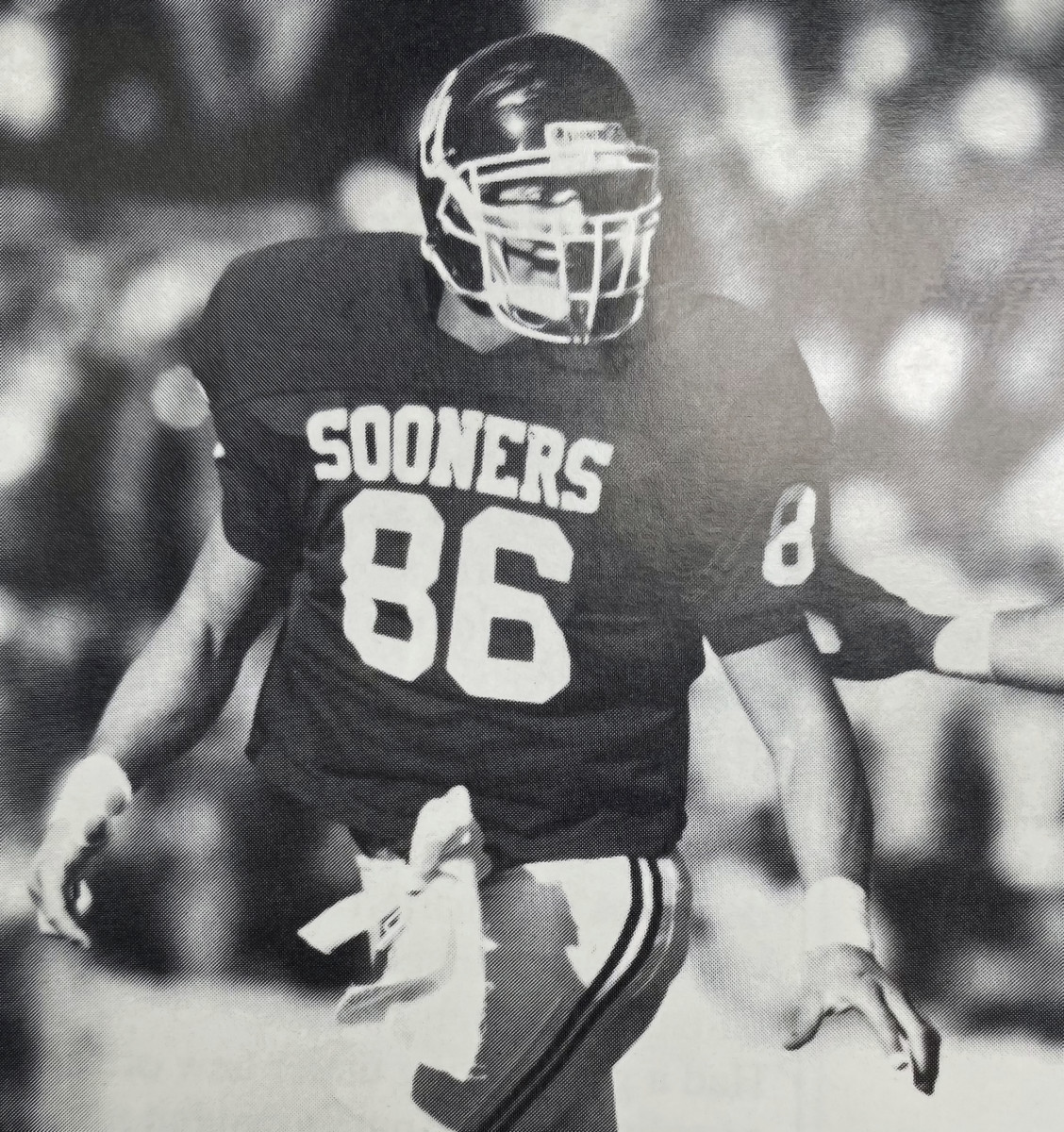
8. Rickey Brady (1990-93)
Rickey Brady got to Oklahoma during an awkward transition time for the Sooners. Barry Switzer’s wishbone was still en vogue when he was a recruit at Putnam City West, but Gary Gibbs’ new pro-style phase was in use when he arrived in Norman.
Still, Brady was a consistent performer at the tight end spot, catching 54 passes for 770 yards (14.3 yards per catch) and scoring six touchdowns as a Sooner and was a powerful end-line blocker.
After two moderate seasons, Brady broke out in 1993 with 35 catches (seventh among Big Eight Conference receivers) for 536 yards (sixth) and two touchdowns. His 15.3 yards per catch also ranked sixth in the conference and he received first-team All-Big Eight honors.
Brady was a sixth-round pick of the Los Angeles Rams in the 1994 NFL Draft (168th overall) but only played in one NFL game in ’94.
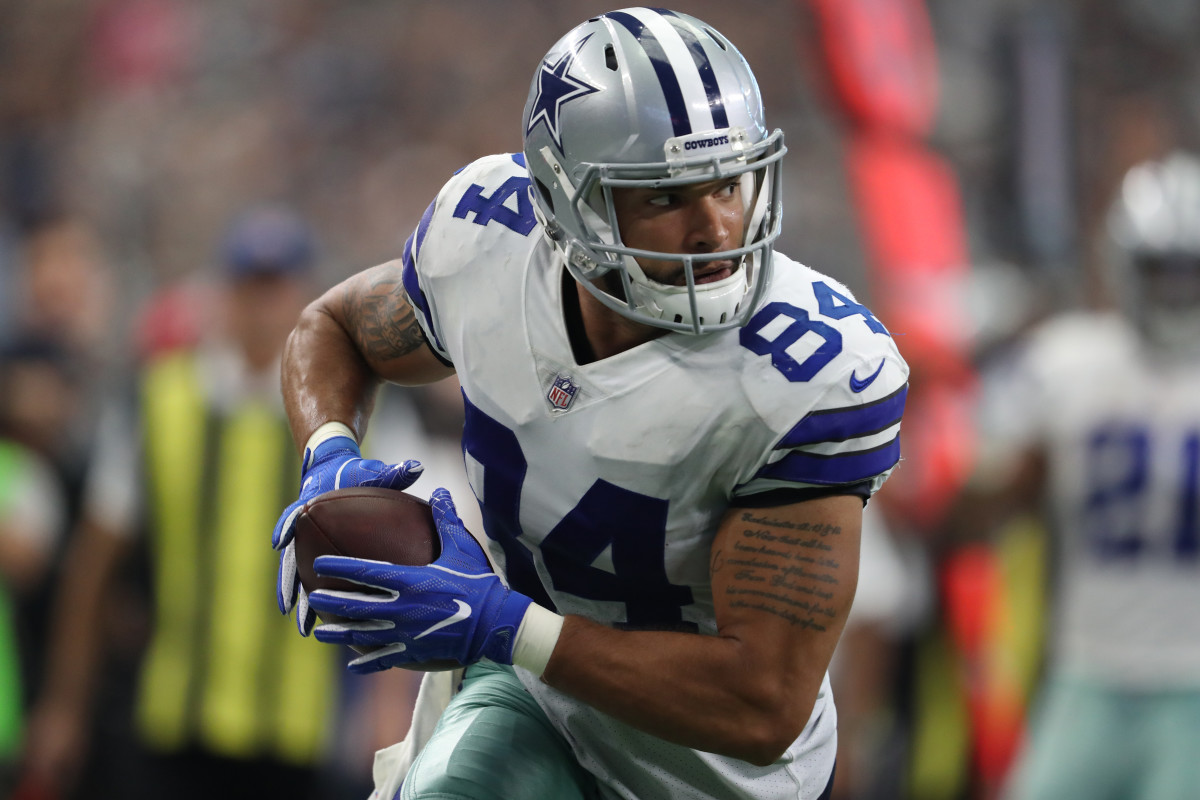
7. James Hanna (2008-11)
James Hanna was undersized (6-4, 215) when he got to Oklahoma from Flower Mound, TX, but his athletic ability — he played wide receiver, returned punts and kickoffs and ran with the ball in high school — was apparent.
Hanna had a quiet first two seasons under Bob Stoops at OU, catching just seven passes, but he snagged 18 receptions for 292 yards and scored seven touchdowns as a junior in 2010, including a four-catch, 130-yard performance at Oklahoma State that was punctuated by a 76-yard touchdown. As a senior, Hanna caught 27 passes for 381 yards and scored two TDs.
In his college career, Hanna ranks ninth in school history among tight ends with 52 catches and 720 yards and finished with nine TDs. He earned second-team All-Big 12 honors in 2011.
Although blocking was never his strong suit, Hanna got better as he put on muscle. He was a sixth-round pick of the Dallas Cowboys in the 2012 NFL Draft (186th overall) and he blossomed in the pros, growing to 252 pounds and playing five seasons with his hometown club, where he caught 37 passes for 374 yards and scoring one touchdown in 2017.

6. Steve Zabel (1967-69)
How athletic was Steve Zabel? He could have been one of the best tight ends in Oklahoma history — or one of the best linebackers. He chose tight end, but didn’t stay there.
Zabel got to OU from Thornton, CO, and was an immediate contributor as a sophomore. He caught 23 passes for 338 yards and scored three touchdowns and made a reputation early as a strong, physical, punishing blocker as he helped clear the way for Heisman winner Steve Owens.
Playing for Chuck Fairbanks, Zabel caught 19 passes for 237 yards and four TDs as a junior, then finished his career with 22 catches for 203 yards and a score. Zabel still ranks sixth in school history among tight ends with 885 receiving yards and 64 catches. He made All-Conference in 1968 and 1969.
The NFL, however, represented a major position switch for Zabel. Zabel was a first-round pick of the Philadelphia Eagles (No. 6 overall) and after playing tight end for the Eagles as a rookie in 1970 (he played in 14 games, made seven starts and caught eight passes for 119 yards and a TD), he switched to linebacker.
Zabel played 10 seasons in the NFL, appeared I 124 games and made 95 starts for the Eagles (1970-74) and New England Patriots (1975-78) before finishing his career with the Baltimore Colts (1979). Tackle numbers were unofficial, but he was routinely among the teams’ defensive leaders and finished his NFL career with six interceptions and 13 fumble recoveries. In 1976, he was even called on to make an extra point — and he did.
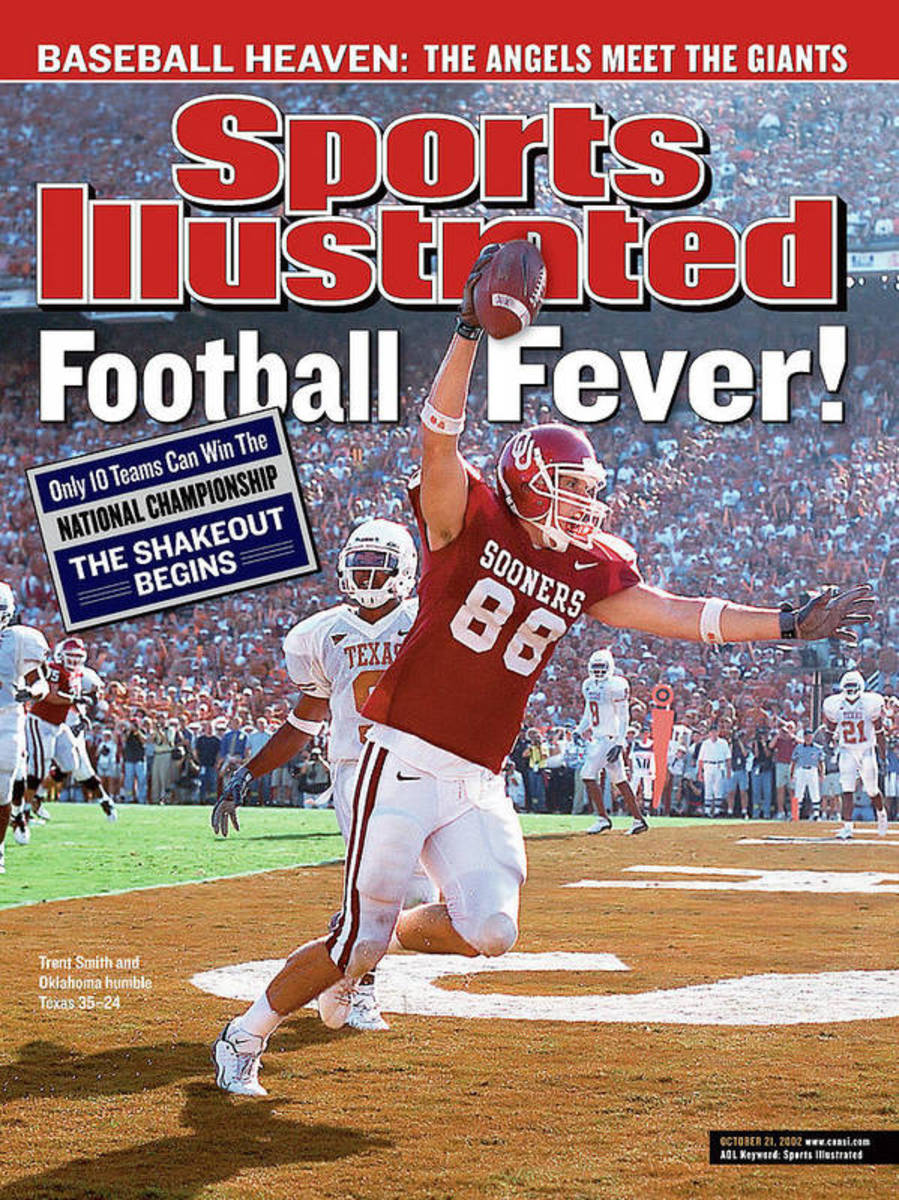
5. Trent Smith (1999-2002)
Trent Smith was the right player at the right time for Oklahoma when Bob Stoops turned the offense over to Mike Leach, and he continued to blossom under Mark Mangino.
Smith was born in Norman and played high school football in Clinton and was the first Sooner tight end to get off the tackle’s hip and regularly split out wide as an extra receiver. Smith made the most of that extra space, setting an OU tight end record that still stand today: 156 catches. Those produced 1,458 yards and 16 touchdowns.
Smith caught 18 passes for 175 yards and two touchdowns as a freshman in 1999, then jumped to 31 for 323 and three TDs during the Sooners’ national championship run in 2000. That included eight catches for 96 yards and a TD in the Big 12 Championship Game against Kansas State. As a junior, he caught 61 passes for 564 yards (both top five among Big 12 receivers) and six TDs, then in 2002 snagged 46 receptions for 396 yards and five TDs. He received All-Conference honors three times, including first-team All-Big 12 in 2002.
Smith didn’t have breakaway speed (he averaged just 9.3 yards per catch), but was sneaky as a route-runner, his catch radius was massive and his hands were unparalleled. His 2001 game against the Jayhawks was his best: 11 catches, 70 yards and four touchdowns, although he also had nine catches for 104 yards against Tulsa that season.
Smith was a seventh-round pick of the Baltimore Ravens in the 2003 NFL Draft (223rd overall) ad played in five NFL games with the San Francisco 49ers in 2005, catching three passes for seven yards.
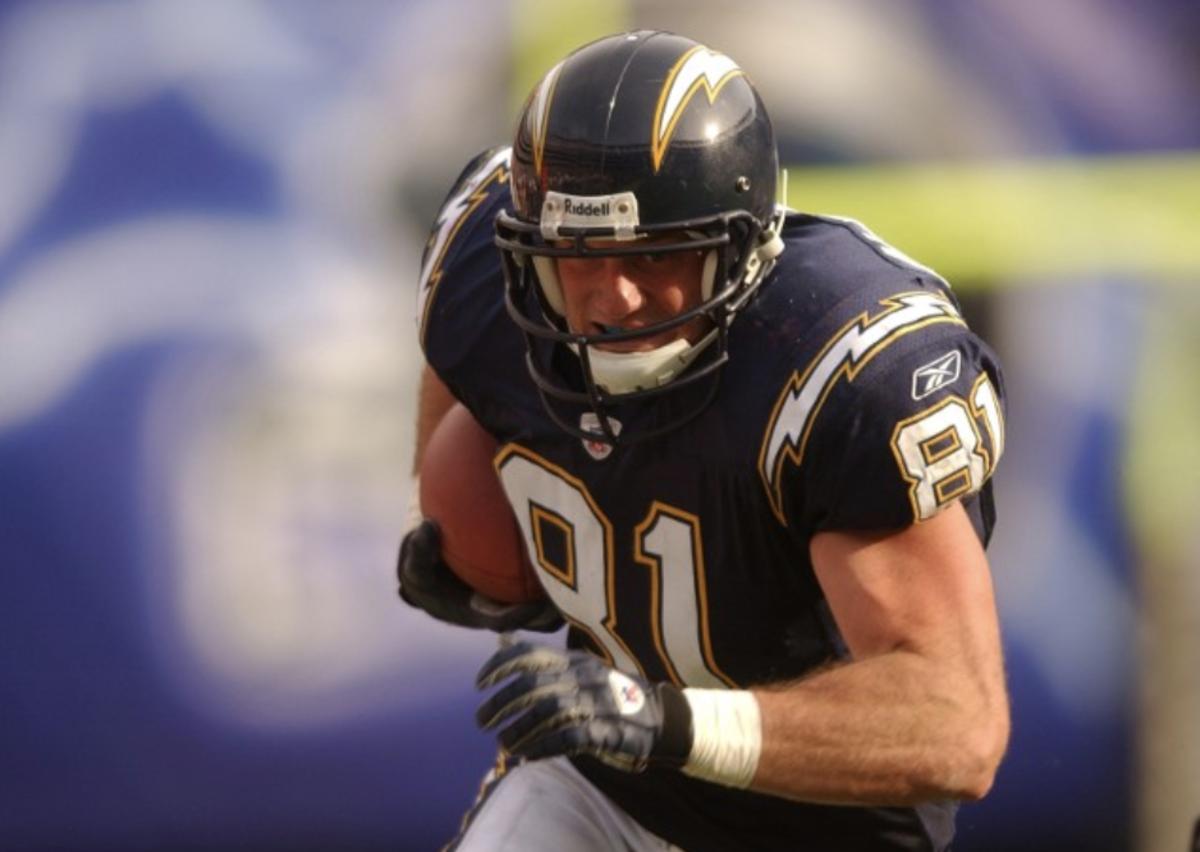
4. Stephen Alexander (1994-97)
Don’t hold it against Stephen Alexander that he played during one of the few down eras of Oklahoma football. The Chickasha product was one of the Sooners’ best players under Gary Gibbs, Howard Schnellenberger and John Blake and had one of the best NFL careers, too.
After a high school career that included two-time district player of the year on defense, All-America honors from USA Today and a state title in the high jump (6-8), he was an instant contributor at OU, catching 10 passes for 123 yards and a touchdown as a freshman, Alexander broke out under Schnellenberger with 43 catches for 580 yards and two touchdowns. In two seasons under Blake, Alexander added another 51 catches for 888 yards and three TDs. He earned All-Conference honors three times.
Alexander was even better in the NFL. A second-round pick of the Washington Redskins in the 1998 NFL Draft (48th overall), Alexander played in 118 NFL games, made 99 starts and had 247 receptions for 2,519 yards and 14 touchdowns.
Alexander had three seasons of more than 40 catches, and twice posted a career-best of 510 yards, including the 2000 season, when he caught 47 passes for 510 yards and scored two TDs and was named to the Pro Bowl. He played four seasons for Washington, two with the San Diego Chargers, one with the Detroit Lions and two with the Denver Broncos before retiring after the 2006 season.
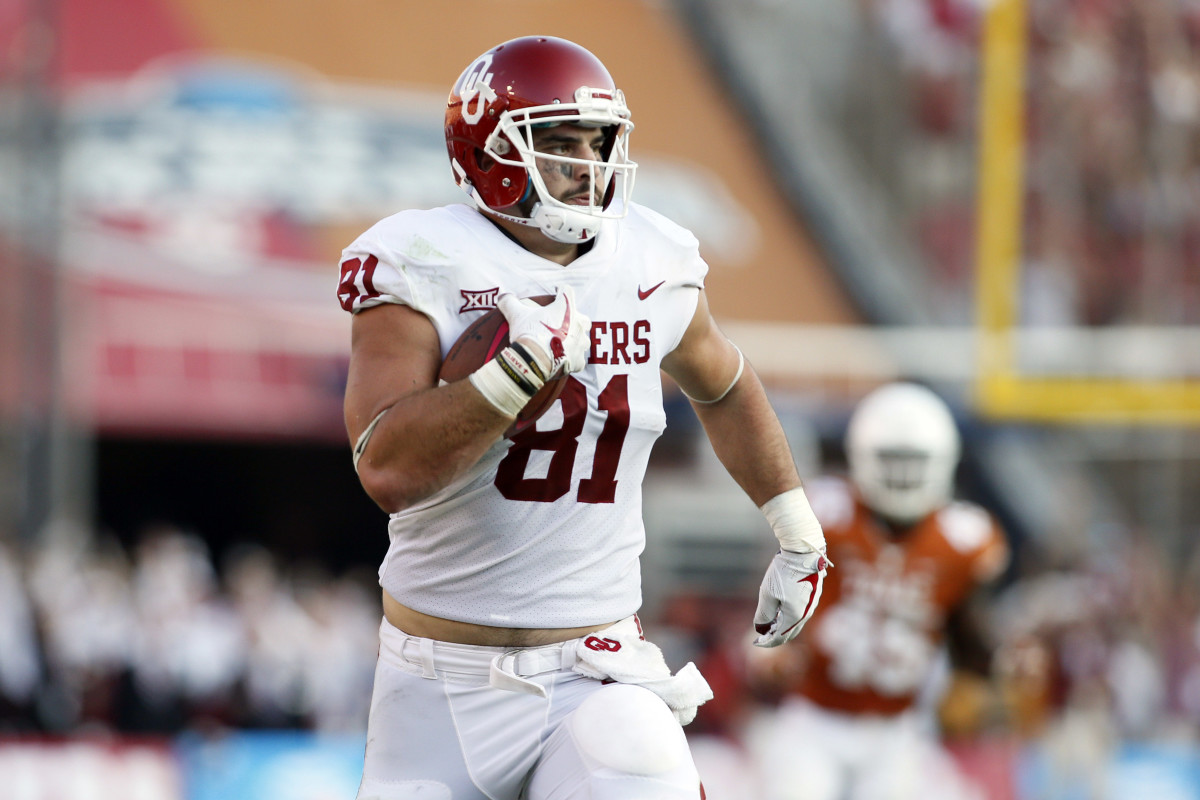
3. Mark Andrews (2015-17)
Mark Andrews came to Oklahoma from Scottsdale, AZ, as a wide receiver. But he quickly bulked up and, in Year 1 of Lincoln Riley’s offense, frequently found mismatches in space as a flex tight end.
As a freshman under Bob Stoops, Andrews caught 19 passes for 318 yards and scored seven touchdowns. As a sophomore in 2016, he made 31 grabs for 489 yards and seven scores. And then, during his junior year — Riley’s first year as head coach — Andrews exploded with 62 catches for 958 yards and eight TDs.
Andrews was a consensus All-America in 2017 and became the Sooners’ only winner of the John Mackey Award, given to the top tight end in football. He ranked in the top 10 of all Big 12 receivers in catches, yards and touchdowns.
For Sooner Nation, Andrews will live forever for his big game against Texas in 2017. He caught four passes for 104 yards, including the game-winning touchdown — a 59-yard catch-and-run with 6:53 to play that put the Sooners up 29-24 — and helped Baker Mayfield win the Heisman. He also caught three passes for 102 yards in a win at Oklahoma State.
He currently owns the school record for most receiving yards by a tight end (1,765) and ranks second for catches (112).
Andrews was a third-round pick of the Baltimore Ravens in the 2018 NFL Draft (No. 86 overall) and has had a brilliant pro career. He caught 34 passes for 552 yards and three touchdowns as a rookie, then had 64 grabs for 852 yards and scored 10 TDs in 2019 as he made the Pro Bowl. Last year he caught 58 passes for 701 yards and seven scores.
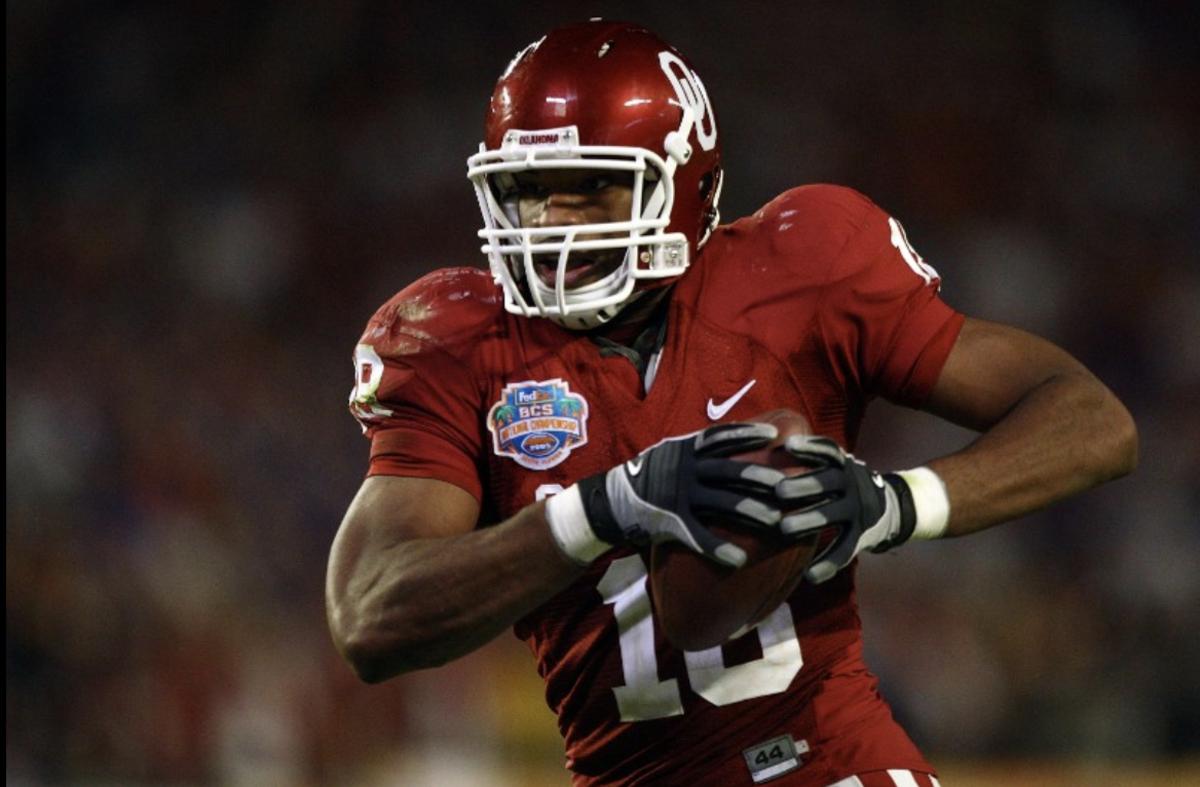
2. Jermaine Gresham (2006-08)
One of the most coveted recruits in the nation out of Ardmore, OK, Jermaine Gresham had to give up a promising career in basketball to become a Sooner football legend under Bob Stoops. Turns out he made the right choice.
Gresham caught only eight passes for 161 yards as a freshman in 2006 under Bob Stoops as the OU offense struggled to find a rhythm, but he broke out in 2007 with 37 catches for 518 yards and scored 11 touchdowns. Then in 2008, Gresham broke out with 66 catches for 950 yards and scored 14 touchdowns as he gained All-America honors and helped Sam Bradford win the Heisman Trophy.
Gresham had his best games on the brightest stages: a 41-yard catch against Texas in 2006, a 35-yard catch off the goal line to launch a 99-yard, game-winning touchdown drive against Nebraska in the ’06 Big 12 title game, two catches for two touchdowns against the Longhorns in 2007, four TD grabs against Texas A&M in ’07, a TD in the Big 12 title game win over Missouri, three catches for 99 yards and two TDs at Washington, five for 90 and a TD against Texas, and career highs of nine catches and 158 yards in a title-clinching, 61-41 win at Oklahoma State that included a 73-yard touchdown grab.
Gresham is third in OU history among tight ends with 111 career catches and second with 1,629 yards.
Gresham was a first-round pick of the Cincinnati Bengals in the 2010 NFL Draft (21st overall) and played nine years in the league, including five with the Bengals and four with the Arizona Cardinals, before retiring following the 2018 season. Gresham caught 377 passes for 3,752 yards and 29 touchdowns during his NFL career, playing in 132 games with 118 starts, and was selected to two Pro Bowls.
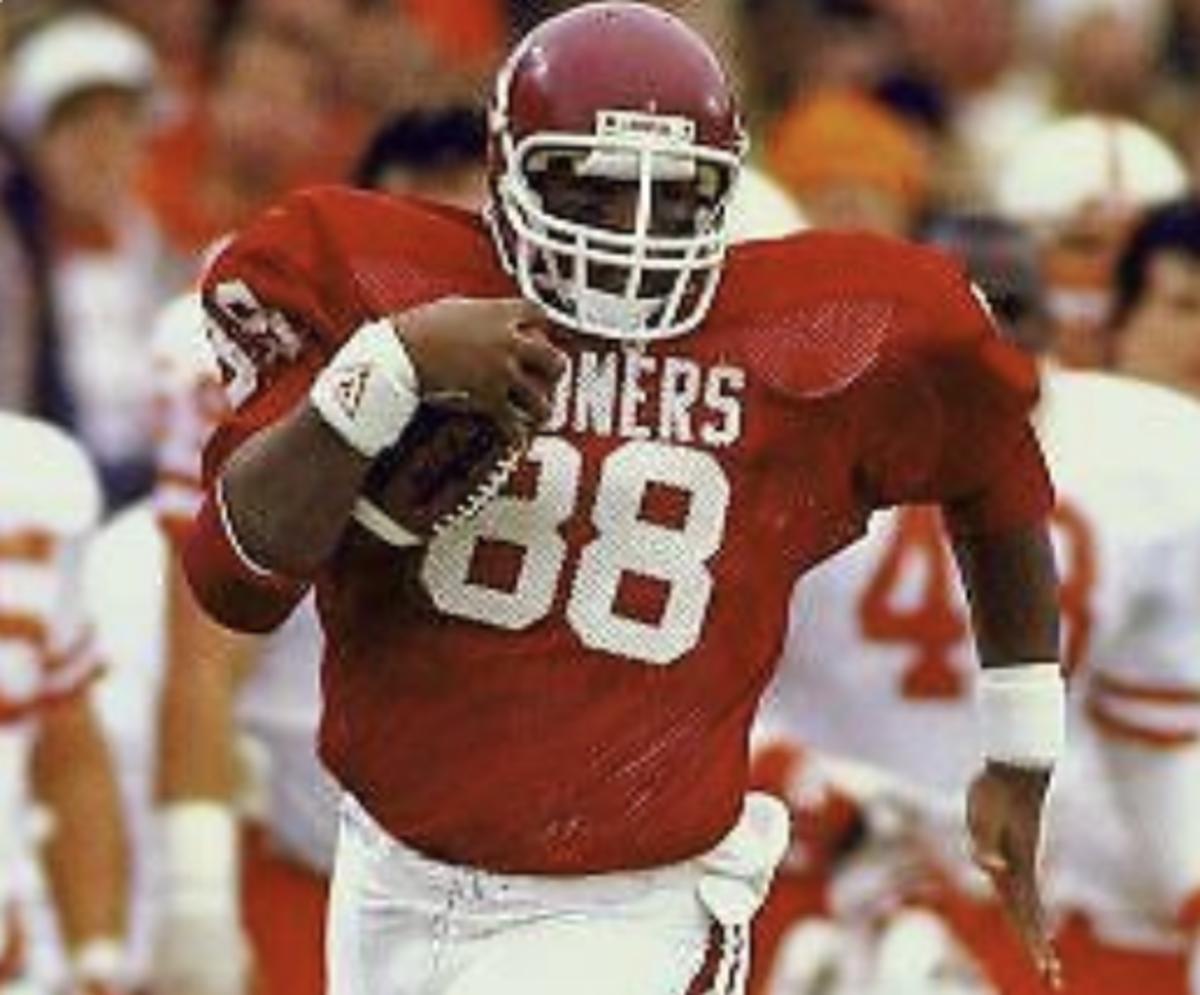
1. Keith Jackson (1984-87)
Barry Switzer promised more throwing opportunities. Signing Marcus Dupree in 1982 convinced Switzer to switch to the I formation, and signing Troy Aikman in 1984 ensured the Sooners would have a more prolific passing game. And yet, Keith Jackson didn't truly take off until Switzer switched back to the wishbone.
Still, that was all the Little Rock product needed to carve out a stellar NFL career and a spot in the College Football Hall of Fame.
“When I went to the University of Oklahoma, Mack Brown was the offensive coordinator. We were in the I-formation,” Jackson told SI Sooners last year. “ … And Troy Aikman was gonna come in and make this offense better. Then Troy Aikman gets hurt and we go back to the wishbone and the rest is history.”
Despite few opportunities in the wishbone, Jackson finished his OU career with 65 catches for 1,561 yards — a school-record 24 yards per catch — and scored 15 touchdowns. He also ran the ball 21 times for 298 yards — 14.2 yards per attempt — and scored four TDs.
Whether it was an 88-yard reverse for a touchdown or a one-handed catch on the sideline to set up the game-winning field goal, Jackson famously tormented Nebraska, but prided himself on consistent production. He caught 15 passes for 233 yards and three touchdowns as a freshman, 22 for 566 and three TDs as a sophomore to help the Sooners win the national championship, 15 for 414 yards and five scores as a junior, and 13 for 358 yards and four TDs as a senior.
Although Jackson ranks only fifth in school history among tight ends with 68 receptions, he’s third with 1,609 yards.
Jackson earned consensus All-America honors in 1986 and 1987, and was a first-round pick of the Philadelphia Eagles in the 1988 NFL Draft (13th overall). Jackson played nine NFL seasons (129 games) with 105 starts for the Eagles, Miami Dolphins and Green Bay Packers. He made five Pro Bowls, was voted All-Pro three times and won a Super Bowl with the Packers.
Jackson finished his NFL career with 441 receptions for 5,283 yards and 49 touchdown catches, including a career-high 10 TDs in his final season in 1996.
In 2001, Jackson was elected to the College Football Hall of Fame.
“I lived a charmed life,” Jackson said. “Right place, right teams, right situations, whether it was that reverse or a one-handed catch or a big catch down the middle, it was just being in the right place at the right time.”
